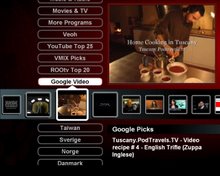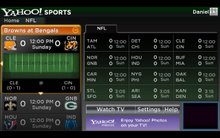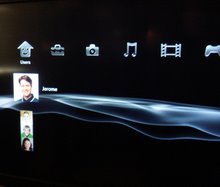The Issue: more boxes are arriving to support internet-video viewing in the living room TV.
Solutions: For cost and technical reasons, most of these boxes require the support of a networked PC.
Behind the scene: Web pages formatted for the TV are known as TV-web. Interaction with these pages is via an IR remote, not a keyboard or mouse. To ensure a box can display the greatest number of TV-web pages or ‘channels’, and also ensure a TV-web channel can reach the greatest number of TVs, they should both support HTML, JavaScript and Flash, building blocks of Web 2.0 technology.
New boxes supporting access to internet-delivered video are arriving in the market from a variety of prominent and lesser-known vendors. The most important criteria by which to measure potential success are box cost and quantity of video sources. Which TV-web device is likely to be offered at a price acceptable to a wide range of users? Previous DMA-styled devices have been priced too high for rapid market adoption, and remained esoteric gadgets
It was recently reported that “Microsoft is going in a hyper-announcement mode: it is announcing its plans to help launch a new line of media extenders”. The report indicates Linksys will introduce a $300 DMA2100 and also a $350 DMA2200 with integrated DVD player. This latter might be better described as a networked DVD player.
A Microsoft press release states “Microsoft Shatters the PC-to-Television Barrier, Releases First Details on Extenders for Windows Media Center”. Microsoft’s general manager for eHome, Dave Alles, states, “the new Extenders for Windows Media Center make it easy to get a wide range of personal and Internet content not only on someone’s main TV but on all the TVs in the house”.
There is also an article in Forbes titled “The iFlop”, which discusses the weakness of Apple-TV. This is also mentioned in paidContent., which states “Apple struggled. It wanted to keep the price low at $300”. The Apple TV is a sort of Microsoft Extender or Digital Media Adapter (DMA). But it has more standalone capability than an Extender, sometimes functioning without the assistance of a networked PC.
There has also been a lot of reporting on the new Vudu box. Much of this reporting is of an optimistic, yet likely misplaced, nature given the $399 price tag. Fortunately, Erica Ogg of CNET remembers prior attempts to build similar boxes. Her report brings a more cautious view, reporting the Yankee Group’s Josh Martin analysis, that, "the biggest strategic misstep by all of these companies is their inability to lease the box and charge for content, or give the box away for free and charge more for content”. He also states, "we're dominated by service providers that subsidize equipment" and "Users get used to that." This is very true for the US market.
The ATSC Set-Top Box (STB) does not have the consumer-acceptance of the European equivalent DVB-T STB. This is why there is more US interest in the DMA-styled box, rather than a networked DVB-t STB.
A D-Link press release, indicates that the DSM-520 DMA “adds more than 200 channels of internet video on your TV” – these are MCE-conformant TV-web channels. This is accomplished using active-TV technology. The D-Link DSM-520 has two advantages over the boxes listed above; I have seen it for sale at a street-price of $150, therefore at approximately half the price of Microsoft Extenders, and it supports more TV-web channels (or sites) than any other box. This is enhanced by active-TV technology’s support for the Flash video format. It is also easy to add more TV-web channels as they become available. This is because active-TV technology supports legacy HTML formatted TV-web. See the chart below.

Media Center Edition (MCE) formatting was initially proposed for TV-web development. It continuous to be most widely used, and is supported by prior and existing display platforms, as indicated in the table above. With the new crop of recently announced Microsoft Extenders (MCX v2), a new TV-web format has been added, which unfortunately is not supported by the legacy of existing platforms.
For those who keep asking, “why can’t the TV process TV-web without the assistance of a networked PC?” the answer is simple. The chip inside a TV costs $15 or less. It is hard to get this chip to perform much the same function as a PC costing $100s. With the PC and TV working together there is also the option of combing PC-web with TV-web operation, with Web 2.0 mash-ups that have not yet been widely demonstrated, but likely offer significant opportunity for enterprising Web 2.0 developers.
This is why it is important that TV-side technology be very low cost to implement – such as active-TV technology. There is also an unwillingness to put complex PC operating systems, such as Windows, inside a TV.
Microsoft’s first round of Extender products had little success in the market. It is difficult to sell such boxes when they cost as much or more than an Xbox 360 or Sony Playstation (now at about $138). These game platforms can also play DVDs and function as DMAs or Extenders. The most compelling scenario involves integrating active-TV technology directly into the TV, thereby eliminating the need for a DMA or Extender, unless it is needed to support the installed base of pre-networked TVs.
Feedback, corrections and comments welcome. Contact me for more information or support with active-TV technology development.
Daniel Mann











No comments:
Post a Comment